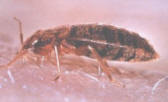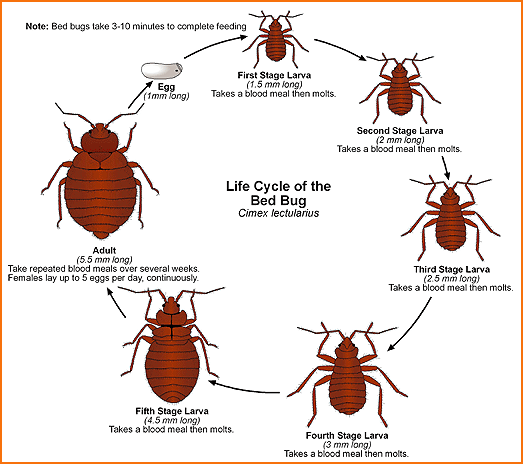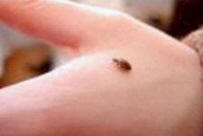
- Before feeding they are a flattened oval shape and light brown, but become rounder and darker after feeding.
- They come out at night and are attracted to the warmth of our bodies and carbon dioxide in our breath.
- They are usually found in bedrooms but hide in cracks and crevices during the day.
- A more established infestation is associated with dark or black staining of the mattress from bed bug excreta.
- An established infestation will also be associated with an unpleasant scent secreted by bed bugs.
- The most common shelters for bedbugs are in the seams of mattresses, in crevices in the bed frame, behind furniture surrounding the bed (especially the headboard) or where the wall meets the floor.
- Bedbugs can be found on their own, but more often congregate in groups. Bedbugs are capable of travelling as far as 3,5m to feed, but usually remain close to the host in bedrooms or on sofas where people may sleep.

Source : www.bed-bug.org
- Bed bugs seem to possess all of the necessary prerequisites for
being capable of passing diseases from one host to
 another, but there
have been no known cases of bed bugs passing disease from host to host.
There are at least twenty-seven known pathogens (some estimates are as
high as forty-one) that are capable of living inside a bed bug or on its
mouthparts. Extensive testing has been done in laboratory settings that
also conclude that bed bugs are unlikely to pass disease from one person
to another. Therefore bedbugs are less dangerous than some more common
insects such as the flea. However, transmission of
trypanosomiasis (Chagas
disease) or hepatitis B might be possible in appropriate settings.
another, but there
have been no known cases of bed bugs passing disease from host to host.
There are at least twenty-seven known pathogens (some estimates are as
high as forty-one) that are capable of living inside a bed bug or on its
mouthparts. Extensive testing has been done in laboratory settings that
also conclude that bed bugs are unlikely to pass disease from one person
to another. Therefore bedbugs are less dangerous than some more common
insects such as the flea. However, transmission of
trypanosomiasis (Chagas
disease) or hepatitis B might be possible in appropriate settings. - The salivary fluid injected by bed bugs typically causes the skin to become irritated and inflamed, although individuals can differ in their sensitivity. Anaphylactoid reactions produced by the injection of serum and other nonspecific proteins are observed and there is the possibility that the saliva of the bedbugs may cause anaphylactic shock in a small percentage of people. It is also possible that sustained feeding by bedbugs may lead to anaemia. It is also important to watch for and treat any secondary bacterial infection.
Some people may develop allergic reactions or larger skin reactions such as:
- Large, itchy wheals up to 8 inches (20 centimetres) across
- Blister-like skin inflammations
- Groups of small, swollen sacs of pus
- Skin rashes similar to hives
- Bedbugs usually enter a property by being carried on clothing or inside furniture.
- The most common source of bedbugs is to stay at a hotel with an infestation. Bedbugs or their eggs get into clothing or suitcases and are then transported home.
- If there are any signs of bedbugs when staying at a hotel, particularly being bitten when sleeping or seeing blood spots on sheets, take great care in bringing your personal belongings home.
- Consult with hotel management to assess the risk - it may be necessary to launder, fumigate or treat clothes to ensure they are safe. The same applies in transferring furniture
- Treating the bites soothes the irritation, but it can still be
very distressing when there are multiple bites as is often the case
 with
bedbugs.
with
bedbugs. - Multiple bites and contact with bedbugs can also lead to an itchy rash or eczema. Consult a pharmacist for advice and treatment if this occurs.
- Bed bugs are an objectionable pest and one of the most difficult to eradicate.
- High levels of hygiene, deep cleaning and the use of amateur insecticides will help to keep bedbug numbers under control, however professional treatment will be required to eradicate the infestation.
- A suspect mattress can be protected by wrapping it in a painter's disposable plastic drop cloth, neatly sealing shut all the seams with packing tape, and putting it on a protected bed after a final visual inspection. Bedding can be sanitized by a 120 °F (49 °C) laundry dryer. Once sanitized, bedding should not be allowed to drape to the floor. An effective way to quarantine a protected bed is to store sanitized sleeping clothes in the bed during the day, and bathing before entering the bed.